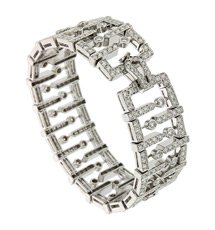A Short History of Engagement Rings
 After a couple agrees to marry, they exchange engagement rings. Some are plain, though most have diamonds. Both kinds are worn daily as a sign of love and commitment. While their appearance has changed over the centuries, their meaning remains the same.
After a couple agrees to marry, they exchange engagement rings. Some are plain, though most have diamonds. Both kinds are worn daily as a sign of love and commitment. While their appearance has changed over the centuries, their meaning remains the same.
The earliest types were from the Roman Empire. The first engagement rings for women were made of iron. They went on the fourth finger on the left hand, said to have a vein leading straight to the heart. By the second century A.C.E., women received two rings. The iron one was to be worn at home and the gold one outdoors.
The year 1477 saw the first diamond engagement ring. Archduke Maximillian of Austria wanted to showcase the strength of his love for his fiancé, Mary of Burgundy. Diamonds, with their unmatched hardness, was an ideal symbol. Other couples who could afford it followed suit, exchanging their own diamond engagement rings.
During the 18th century, Brazil became a major source of diamonds. In the 19th century, South Africa’s diamond boom supplied even more gemstones to the world. Increased availability meant more people than ever before could get diamond bands. The brightest at the time were cushion cut engagement rings.
In the early 20th century, the round brilliant diamond appeared. Its unprecedented sparkle helped make round brilliant engagement rings a perennial favorite. During the 1930s, an extensive advertising campaign underscored the connection between diamond bands and romance. Rings jumped from popular to ubiquitous.
For countless years, engagement rings were only for women. Today’s couples may have one or both members wear bands. Along with classic styles, designers experiment with different cuts, settings and decorations to create rings for all tastes. Those who want more say in their rings turn to jewelers who offer create-your-own-ring systems to create looks they love.





